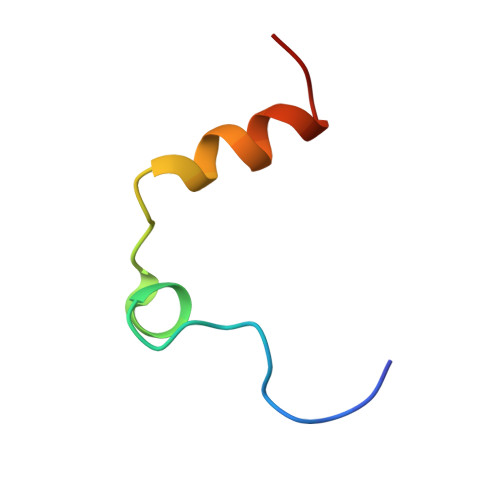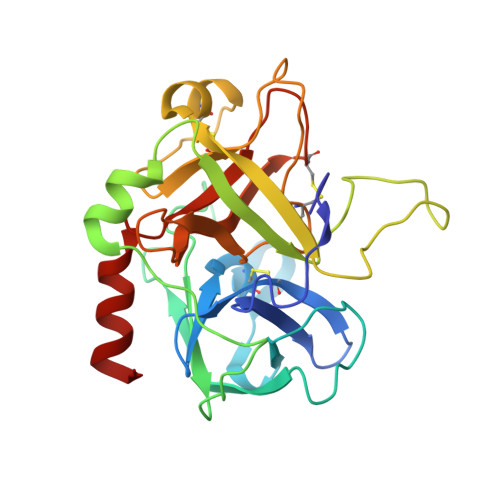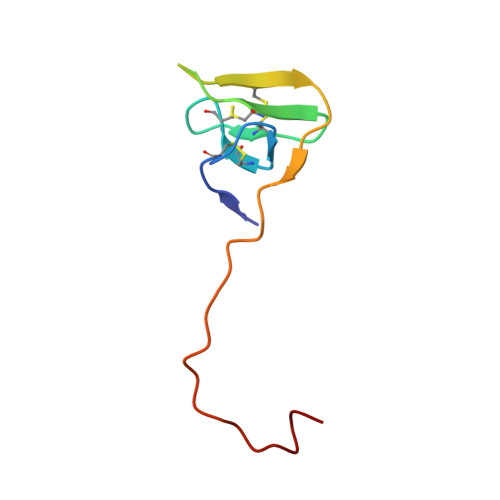Essential role of conformational selection in ligand binding.
Vogt, A.D., Pozzi, N., Chen, Z., Di Cera, E.(2014) Biophys Chem 186C: 13-21
- PubMed: 24113284
- DOI: https://doi.org/10.1016/j.bpc.2013.09.003
- Primary Citation of Related Structures:
4MLF - PubMed Abstract:
Two competing and mutually exclusive mechanisms of ligand recognition - conformational selection and induced fit - have dominated our interpretation of ligand binding in biological macromolecules for almost six decades. Conformational selection posits the pre-existence of multiple conformations of the macromolecule from which the ligand selects the optimal one. Induced fit, on the other hand, postulates the existence of conformational rearrangements of the original conformation into an optimal one that are induced by binding of the ligand. In the former case, conformational transitions precede the binding event; in the latter, conformational changes follow the binding step. Kineticists have used a facile criterion to distinguish between the two mechanisms based on the dependence of the rate of relaxation to equilibrium, kobs, on the ligand concentration, [L]. A value of kobs decreasing hyperbolically with [L] has been seen as diagnostic of conformational selection, while a value of kobs increasing hyperbolically with [L] has been considered diagnostic of induced fit. However, this simple conclusion is only valid under the rather unrealistic assumption of conformational transitions being much slower than binding and dissociation events. In general, induced fit only produces values of kobs that increase with [L] but conformational selection is more versatile and is associated with values of kobs that increase with, decrease with or are independent of [L]. The richer repertoire of kinetic properties of conformational selection applies to kinetic mechanisms with single or multiple saturable relaxations and explains the behavior of nearly all experimental systems reported in the literature thus far. Conformational selection is always sufficient and often necessary to account for the relaxation kinetics of ligand binding to a biological macromolecule and is therefore an essential component of any binding mechanism. On the other hand, induced fit is never necessary and only sufficient in a few cases. Therefore, the long assumed importance and preponderance of induced fit as a mechanism of ligand binding should be reconsidered.
Organizational Affiliation:
Edward A. Doisy Department of Biochemistry and Molecular Biology, Saint Louis University School of Medicine, St. Louis, MO 63104, United States.



















